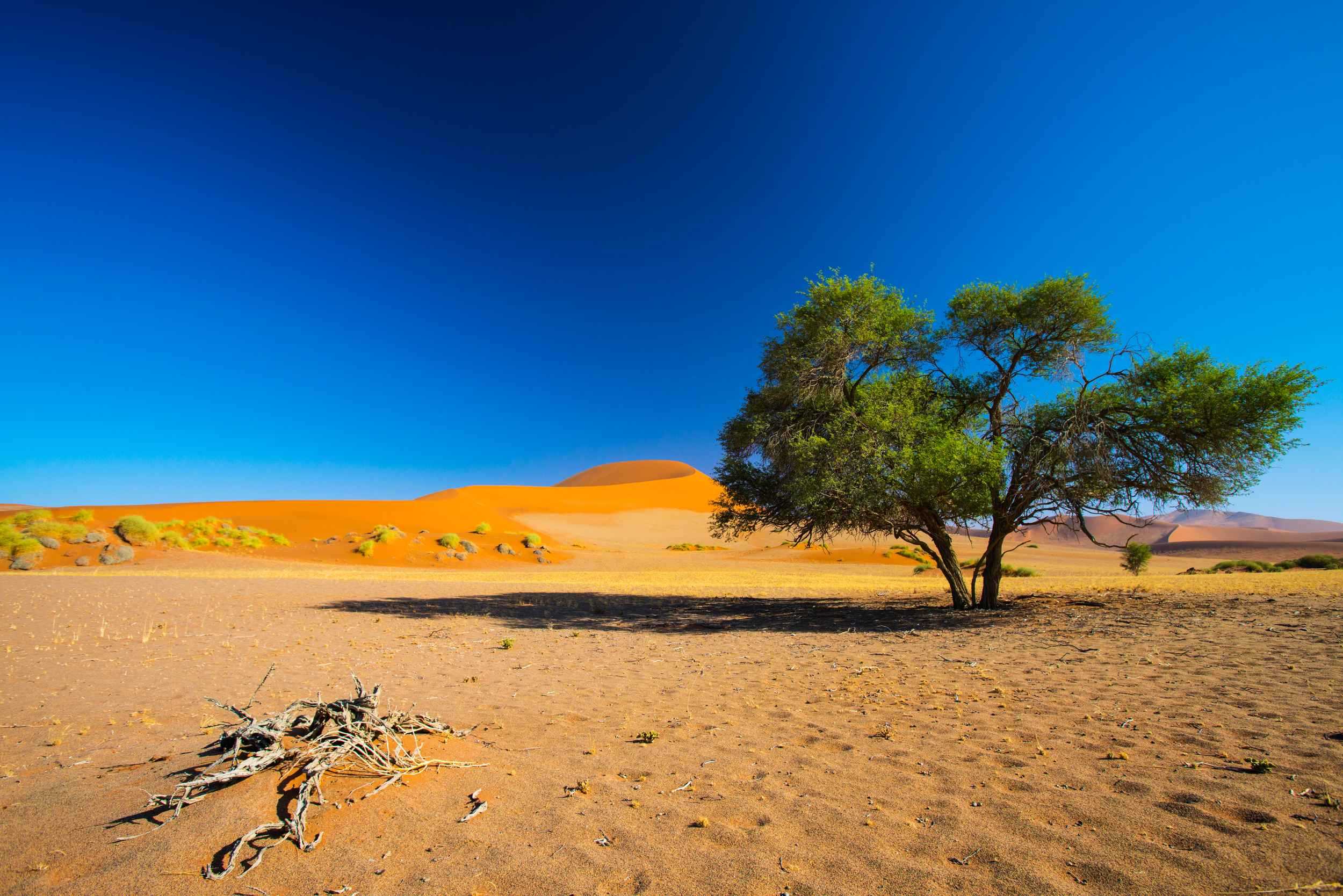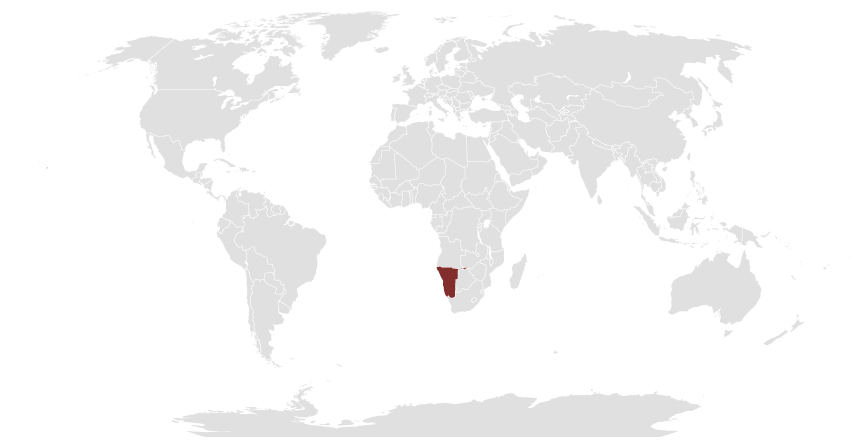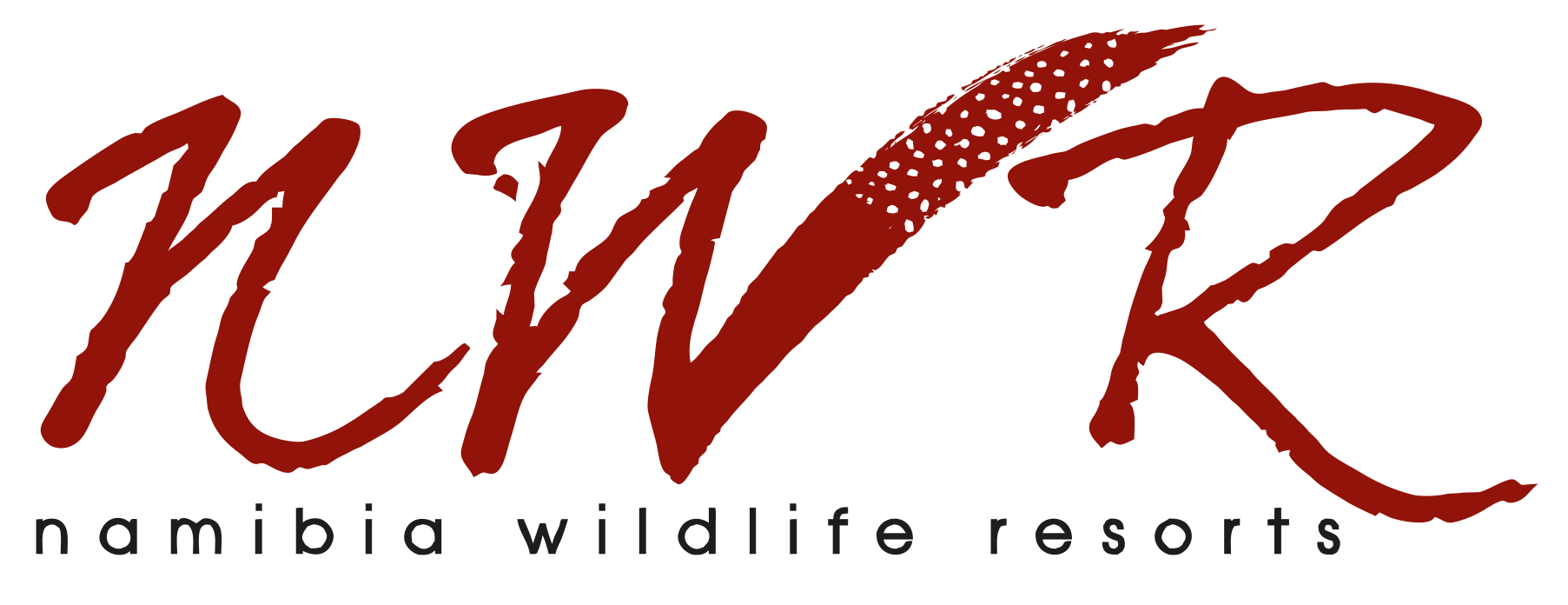About Namibia


Namibia, a country located in sub-Saharan Africa in the south western corner of the continent is a land of gripping beauty, wide open spaces and abundant sunshine. It is a country, arid for most parts but blessed with contrasting and unspoilt landscapes ranging from lush vegetation and riverine woodlands in the north eastern areas to mountains, gorges and spectacular desert settings in the southerly west.
With 22 National Parks, covering an area of more than 18% of the terrestrial area, Namibia has established an impressive System of National Parks, managed by the State, which constitutes a cornerstone of its hugely successful conservation programme.
While having recovered Elephant and Lion populations to complete the Big Five in Namibia, the country also boasts some exemplary conservation successes with the successful reintroduction of the Black Rhino in the Kunene communal areas and Etosha National Park and the reintroduction of Black Faced Impala. Namibia also boasts the highest population of free-ranging Cheetah in the whole world.
Namibia’s Key Attractions
There are a number of natural attractions in Namibia. Here is a glimpse into just a few of them:
- Ai/-Ais/ Richtersveld Transfrontier Park: The area boasts the second largest canyon in the world, the Fish River Canyon – which opens every year.
- Namib Naukluft National Park: A protected area with large contrasts in vegetation and geology. Key places to see are Sossusvlei – the heart of the Namib Desert and where the highest sand dunes in the world can be found, the Sesriem Canyon and the Naukluft hiking trail – one of the toughest in the world.
- Skeleton Coast National Park: The Skeleton Coast is a desolate and vast area which shows the remnants of battles between man and nature over the centuries, as witnessed by a number of shipwrecks on the coast. Desert Elephant and antelope species wander the riverine landscapes of this vast area. The remoteness of the area and rich Atlantic coastline also lends itself suitable to fishing and angling. Make a booking with NWR for the best fishing experience in Namibia.
Currency
The national currency in Namibia is the Namibian Dollar which is linked to and equals in value the South African Rand. The South African Rand is accepted anywhere in Namibia on a one to one basis. The Namibian dollar has denominations of 200, 100, 50, 20 and 10 dollar notes, 5 and 1 dollar coins and 50, 10 and 5 cent coins.
Although the import of foreign currency into Namibia is unlimited, all foreign currency must be declared at the point of entry. Major credit cards are widely accepted throughout Namibia.
Namibian roads are well maintained and car hire is readily available throughout the country. Coaches and busses run to and from the major cities within Namibia, Rail transport is also available with a luxury overnight coach from inland to the coast at a low speed.
Climate
Inland Namibia has hot summers with temperatures ranging up to 34 degrees Celsius and could experience frost in the winter months. Rainfall is expected mainly in the summer months. The main rain season is January to March, except in the south which experience winter rainfall.
The climate at the coast is mild ranging generally from 12 degrees Celsius to a pleasant 24 degrees throughout the year. Very hot east winds with sandstorms can at times be expected for short periods of usually two to three days in the winter months, in particular May to July. Average rainfall per year is limited to 50 mm along the coast to 350 mm in the central and 700 mm in the far north-eastern regions. Fog patches are mainly to be expected in the late winter and spring from August to November, which often clear during the day.
Namibia is the most arid country in Southern Africa, with humidity of about 10% in winter months and varying from 50% to 80% in summer.
History, Population, Language and Culture
Among the first people to inhabit Namibia were the San Bushmen. Later inhabitants include the Nama and the Damara. The Khoi-Khoi tribe came from the south, gradually displacing the San. The arrival of the Bantu-speaking Ovambo and Herero from the north marked the first tribal structures in Southern African Societies.
The first European visitors were Portuguese mariners seeking a way to the Indies in the late 15th century, but they confined their activities in Namibia to erecting stone crosses at certain points along the coast as navigational guides.
They were followed much later by the English and Germans. In 1878, the United Kingdom annexed Walvis Bay on behalf of Cape Colony, and the area was incorporated into the Cape of Good Hope in 1884. The annexation of the country by Germany in 1884 still accounts for the distinctive German architecture and traditions and the German influence is very much still evident in the country today.
In 1904, the Herero people, who were Bantu-speaking cattle herders, launched a rebellion, but it was brutally put down. Meanwhile, in the south, diamonds had been discovered east of Lüderitz by a South African labourer. The German authorities branded the entire area between Lüderitz and the Orange River a ‘forbidden area’.
After Germany’s defeat in the World War 1, the League of Nations entrusted the territory to South Africa, and the territory then became known as South West Africa. The mandate to rule was renewed by the United Nations following World War 2, but the UN refused to sanction the outright annexation of the country by South Africa. The South African government nevertheless tightened its grip on the country and imposed apartheid rule until well into the 1980s.
The South-West Africa People’s Organization (SWAPO) began it’s armed struggle to liberate Namibia in 1966 and in 1971 the International Court of Justice upheld a UN decision, determining that South Africa’s occupation of Namibia was illegal. In April 1978 the UN Plan called for the holding of elections in Namibia, under UN supervision and control. However, in November 1978, South Africa, in defiance of the UN, unilaterally held elections in Namibia which were boycotted by SWAPO and other political parties.
South Africa eventually was forced out by a combination of United Nations pressure and guerrilla warfare from SWAPO. The fall of apartheid and the release of Nelson Mandela from his 25 year incarceration, mirrored the international mood and reaction to the fall of the Berlin Wall and the end of the cold war with Glasnost.
In 1989, elections gave SWAPO a majority of seats in a constituent assembly. The new nation, called Namibia and led by the elected President Sam Nujoma, became independent on 21 March 1990 and Independence Day is annually celebrated on this date. On March 1, 1994, the coastal enclave of Walvis Bay and 12 offshore islands were transferred to Namibia by South Africa. This followed 3 years of negotiations between the governments of Namibia and South Africa and the peaceful resolution of this territorial dispute, which dated back to 1878, was praised by the international community.
Today Namibia is peaceful and economically is largely better off than many other countries of the region because of its productive mining, tourism, farming and fishing industries.



